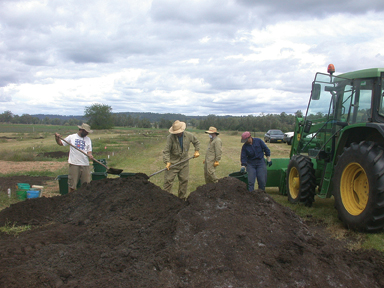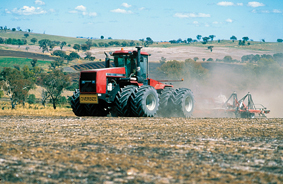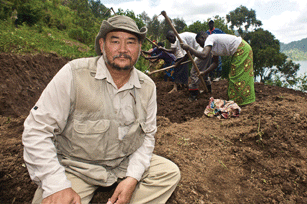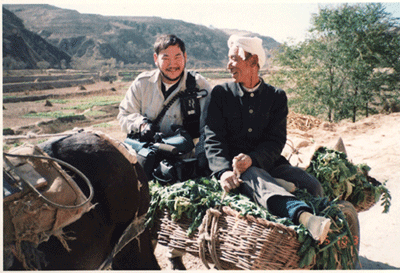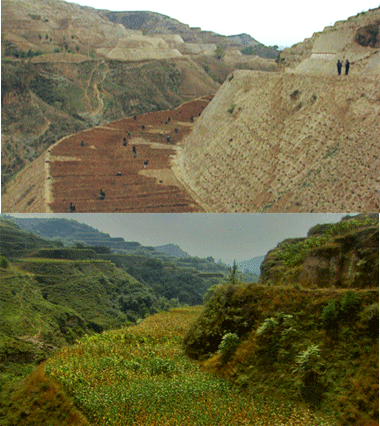
|
Published:
Peak fertilizer
To grow food, you need nutrients: there’s no getting around it. With the Food and Agriculture Organization predicting that the world will need to produce 70 per cent more food for the 9.1 billion people that will populate the planet by 2050, alarm bells are ringing about the issue of nutrient supply.
What can we do when the traditional supplies of essential fertiliser nutrients dwindle, become prohibitively expensive and can no longer satisfy demand?
The only solution seems to be a return to the familiar concept of ‘reduce, re-use and recycle’. We need to reduce fertiliser use and nutrient losses to the environment. Plus, we need to recycle and re-use nutrients wherever and whenever we can.
The fertiliser problem
Of the three main fertiliser nutrients – nitrogen (N), phosphorus (P) and potassium (K) – N is manufactured using natural gas to make ammonia, and P and K are mined from the Earth.
According to the International Fertilizer Industry Association, 97 per cent of the world’s N fertiliser is made using natural gas as the energy source. With natural gas supplies predicted to run down over the next 25 to 50 years1, N fertiliser prices will continue to rise, reflecting rises in gas prices. By 2030, although Australia’s natural gas production is predicted to increase four-fold, exports will rise and will more than double domestic consumption.2 This could leave us with less gas to make our own fertiliser, and facing the problem of having to import it at an even greater cost.
Phosphorus fertiliser is manufactured from phosphate rock, and K fertiliser is made from potash – both non-renewable sources. Although K supplies don’t seem to be causing too much concern yet, it’s a different story for P. Around the world, phosphate rock quality and quantity is declining. Experts tip P supply to peak by 2030,3 with known reserves predicted to be depleted within 50–100 years.
Apart from our growing population, the trend to biofuel use as an alternative to fossil fuels is also hugely increasing global demand for fertilisers.
Dwindling nutrient supplies are not the only problem associated with fertiliser use. Crops can only take up a certain amount of the nutrients applied to them, and much is lost to the environment; industry point-source pollution and urban sewerage systems also add to nutrient pollution levels. Fertiliser runoff to waterways and oceans causes eutrophication and damage to marine environments. Plus, nitrous oxide, a potent greenhouse gas, is produced by volatilisation of fertiliser N and by processes used to remove N from sewage effluent.
Fighting nutrient loss
Commissioner of the Natural Resources Commission, Dr John Williams, says that movement of fertiliser from crops is a big problem in Australia.
‘Groundwater is a big issue in terms of N leakage, as it gets washed into the environment,’ he says.
Cutting back on the amount of fertiliser applied to crops – and developing crops that use N more efficiently – are two ways of reducing the high levels of nutrients from agricultural sources that make their way into the ocean.
CSIRO Sustainable Ecosystems is developing a system to reduce N fertiliser use in sugarcane crops by accurately calculating how much to apply. Lead researcher, Dr Peter Thorburn, says that the ‘N-Replacement’ method balances the amount of N fertiliser applied to a crop against the amount of N both removed by the previous crop and lost to the environment.
‘In field trials, N applications were 35 per cent lower when using N-Replacement, and about 50 per cent less N was lost to the environment,’ says Dr Thorburn. ‘Plus, sugar yields actually increased in trial crops that were given less N.’
A CSIRO Plant Industry project, lead by Dr Ian Fillery, is seeking to reduce N loss by screening wheat varieties to find those that uptake N most effectively.
‘Recovery of fertiliser N by wheat is typically incomplete. If we can find a high-performing variety that takes up the most N possible, then less will be lost to the environment,’ says Dr Fillery.
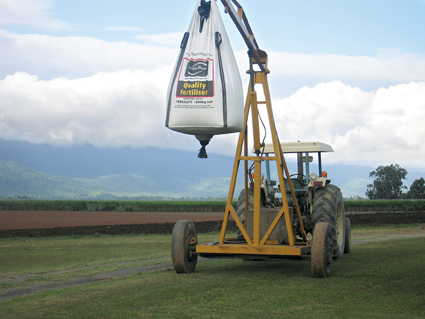
|
|
CSIRO’s ‘N-Replacement’ method reduces N fertiliser use in sugarcane crops by accurately calculating how much to apply. Credit: CSIRO Sustainable Ecosystems
|
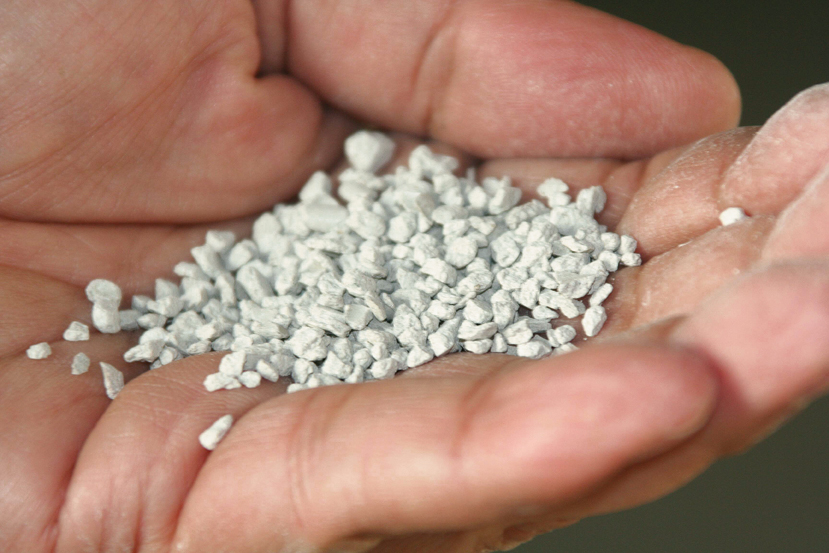
|
|
Struvite. Credit: Paques B.V.
|
Nutrient re-using and recycling
As well as trying to reduce N inputs and losses on-farm, we have to recycle and re-use nutrients. One source that is infinite – as long as humanity is around, that is – is sewage.
One way of recycling nutrients from sewage is by reusing biosolids – the dry, stable matter that remains after sewage has been processed. Biosolids contain high proportions of N, P and K, and are used across Australia in agriculture, composting and land rehabilitation.
After biosolids are removed, the effluent liquid can be treated and recycled. Ideally, most of the remaining nutrients should be recovered from wastewater before it is finally released into receiving waters and the nutrients are lost to the ocean. Researchers around the world are trying to develop ways to achieve this. Dr Williams says, however, that we haven’t made enough progress in this area.
‘Lots of nutrients are still going into ocean outfalls of sewerage systems,’ he says. ‘We are putting out millions of tonnes of very valuable material, like P, into the sea, instead of recycling it.’
A United States company has invented a way of recovering N in the form of solid ammonium carbonate from wastewater. The anaerobic digester-based process also makes biomethane gas.
‘Our system uses no chemicals and only a small amount of waste heat and power,’ says Mr Dennis Burke, head of the Environmental Energy & Engineering Company. ‘And, unlike other ammonia removal and recovery processes, it is profitable to recover ammonia as an inorganic fertiliser derived from an organic source.’
A high proportion of P, and some N, can be also be recovered by precipitating magnesium ammonium phosphate – commonly known as struvite – from sewage wastewater and intensive livestock waste. Depending on the form of the struvite product, it can be a suitable substitute for commercial fertilisers. Professor Tony Priestley, recently retired CSIRO scientist and water quality expert, says that struvite production is a feasible technology, with a plant in Canada already producing struvite reactors.
However, Professor Priestley cautions that we still need to look at other sources of nutrients.
‘Wastewater is just one source; it won’t save the planet, as the amounts of nutrients in wastewater are not that high,’ he says. ‘If you could recycle all the N and P from every human, you’d get about 16 per cent of the N and 21 per cent of the P fertiliser that is manufactured worldwide. If you could also recycle all the N and P from farm animals, you’d get double that. But, the trick is in capturing all of the waste in one spot.’
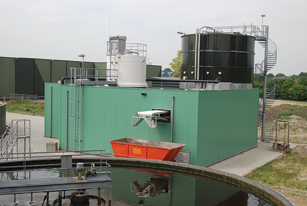
|
|
This reactor in the Netherlands recycles industrial wastewater to produce struvite, a suitable substitute for commercial fertilisers. Credit: Paques B.V.
|
|
It’s clear that fertiliser use can be cut back and made more efficient, and that technology exists to recover nutrients from wastewater. Both of these aims are desirable – and necessary – from both an economic and an environmental viewpoint. But, to make the process a reality, we need some change in thinking and some governmental action to implement national solutions. |
Dr Williams suggests that instigating compliance with standards could help with the issue of diffuse pollution from agricultural activity. |
‘We’ve brought point-source pollution — that from industrial plants, milk factories and the like – under control with good legislative frameworks,’ he says. ‘But, it’s harder to regulate diffuse pollution; changes in practise have to be made. We need incentive programs, like those to reduce pesticide use in the cotton industry – they knew they could lose their licences if they didn’t comply, so they did so.’ |
Dr John Radcliffe, Chairman of the Water Forum of the Australian Academy of Technological Sciences and Engineering, thinks that profits will probably be more important than legislation, especially in regard to P recovery. |
‘Ultimately, technological solutions to reclaim phosphorus at a competitive market price in relation to whatever becomes the ultimately rising price of “natural” phosphorus will be the motivator,’ he states. ‘I don’t think you can compulsorily legislate for these policies – they must ultimately have a market rationality.’ |
Mr Dennis Burke agrees. ‘The advantage of our N recovery process is that we can make money at it – the only way to survive in the US,’ he stresses. |
Professor Priestley is adamant that the government needs to come to grips with the problem of phosphorus supply. |
‘It hasn’t entered the political imagination at all; no-one seems to have heard of peak phosphorus,’ he says. ‘They debate on population growth and how to feed everyone, but this takes energy, water and nutrients; no-one has thought through what’s required.’ |
Author and science writer, Julian Cribb, is trying to overcome this; he is calling for the implementation of a National Nutrient Plan to maximise nutrient re-use and reduce our dependence on fertiliser. |
‘Every human generation, except for the last two, have recycled their nutrients back into agricultural systems,’ he says. ‘The last two generations are the first to waste them completely. We’ve created an unsustainable system; using nutrients up and then throwing them away.’ |
1 Foran B and Poldy F (2002). Future Dilemmas: options to 2050 for Australia’s population, technology, resources and environment. CSIRO Sustainable Ecosystems.
2 Syed A, Melanie J, Thorpe S and Penney K (2010). Australian energy projections to 2029–30. ABARE research report 10.02, Australian Bureau of Agricultural and Resource Economics.
3 Cordella D, Drangerta J and White S (2009). The story of phosphorus: global food security and food for thought. Environmental Change 19:2, 292–305.


